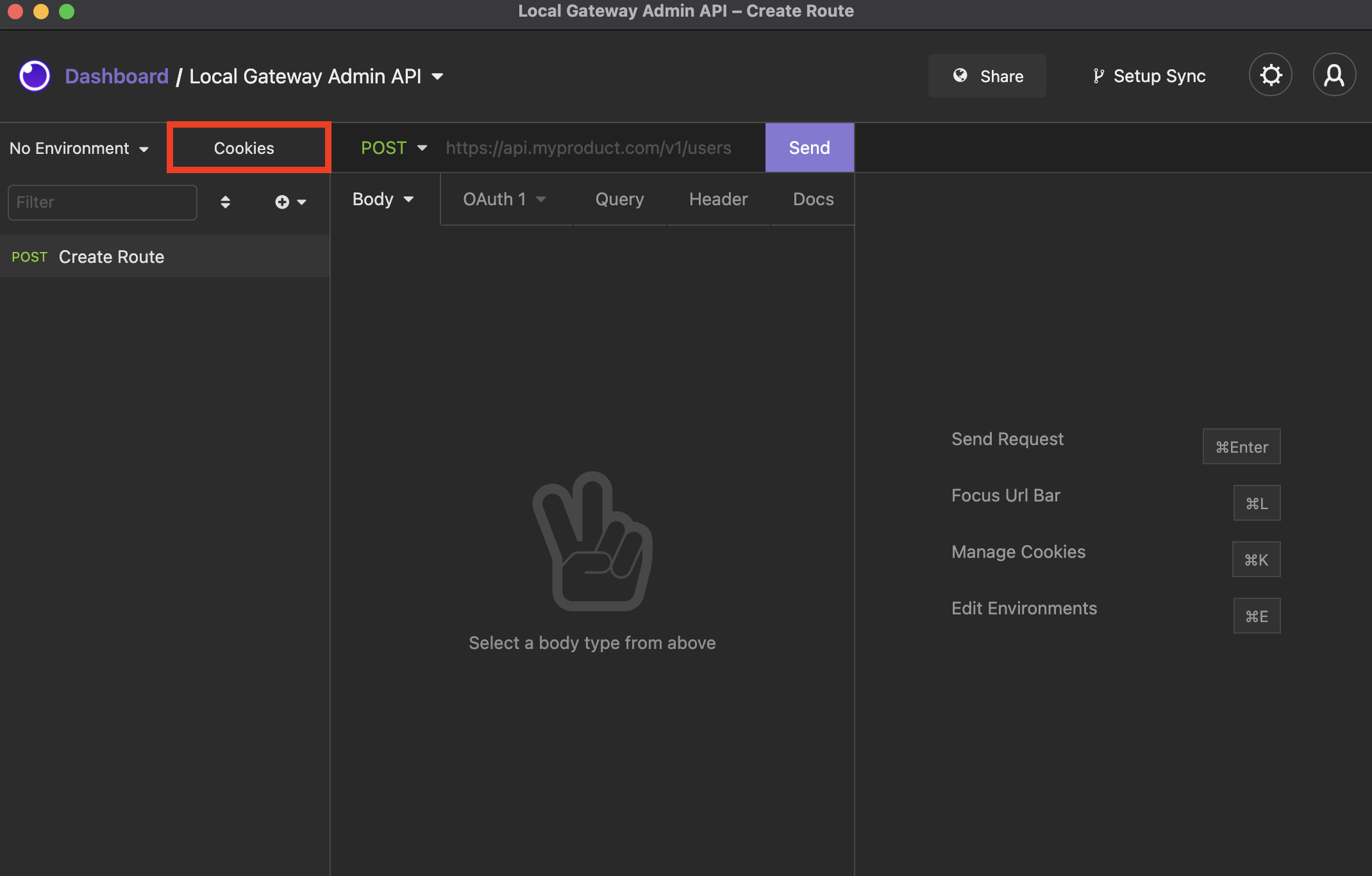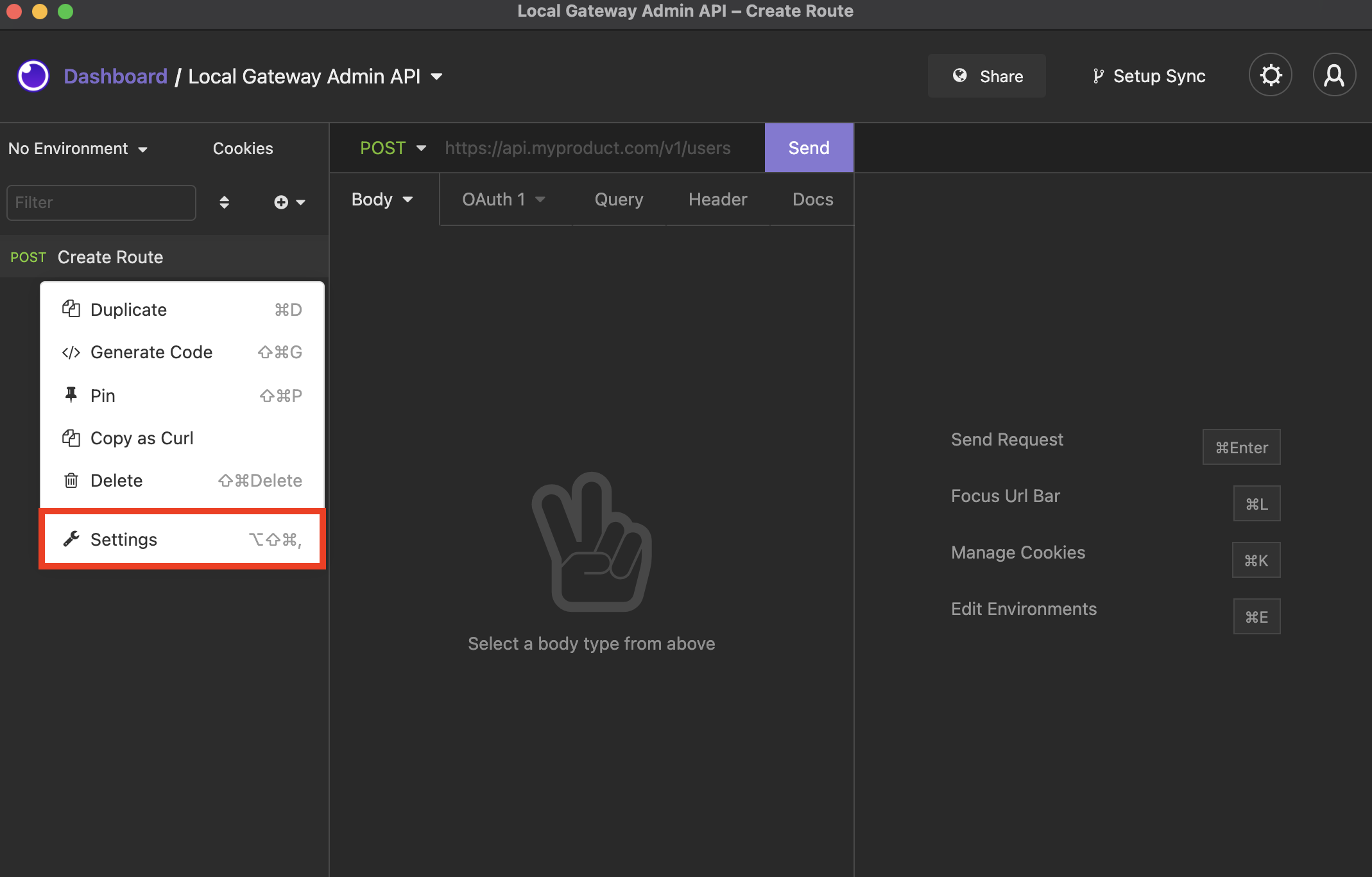-
- Enable Enterprise membership
- Configuring EE SSO
- Integrating Insomnia Enterprise with Okta SAML 2.0
- Integrating Insomnia Enterprise with Okta OpenID Connect
- Integrating Insomnia Enterprise with Microsoft Azure/Entra ID SAML 2.0
- Insomnia Whitelisting Guide for Enterprise Users
- Transfer enterprise organizations and license
- Configuring SCIM
- Multiple Owners
- Manage Domains
- Invite Controls
- Storage Controls
- Session Report
Cookie Management
Insomnia automatically stores cookies from every response and sends them with requests when needed (just like a web browser would).
Manage Cookies
Each workspace has its own cookie jar. Cookies can be added, viewed, modified, or deleted within the cookie manager. The cookie manager is accessible via the Cookies button.
 The Cookies button enables you to access the cookie manager.
The Cookies button enables you to access the cookie manager.
Change Cookie Sending and Storing Behavior
Cookie storing and sending is done automatically. However, it is possible to change this behavior on a per-request basis, within the request settings dialog. The request settings dialog can be accessed via the request options dropdown beside each request in the sidebar.
 Access the cookie settings in an individual request dropdown menu.
Access the cookie settings in an individual request dropdown menu.
Send Cookies Automatically
Enabling this option will cause Insomnia to automatically send cookies with the request via the Cookie header.
Store Cookies Automatically
Enabling this option will cause Insomnia to save any cookies received via the Set-Cookie header automatically.
Reference Cookie Values
Sometimes it is necessary to reference the value of a cookie within part of a request. For example, it is common to receive a CSRF token in as a cookie values and pass it as a header or form value in a subsequent request.
This can be done using the Request Template Tag.